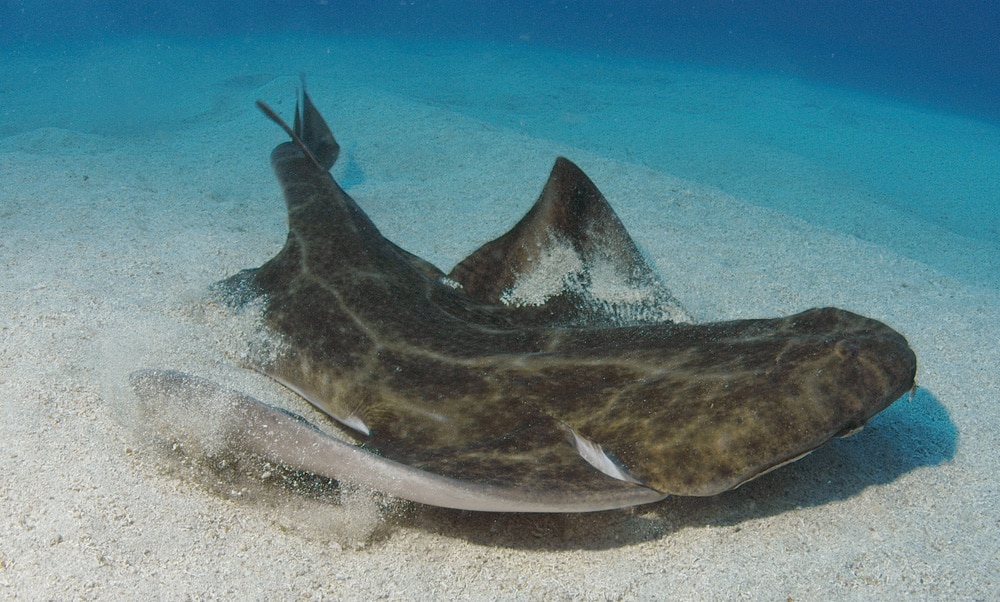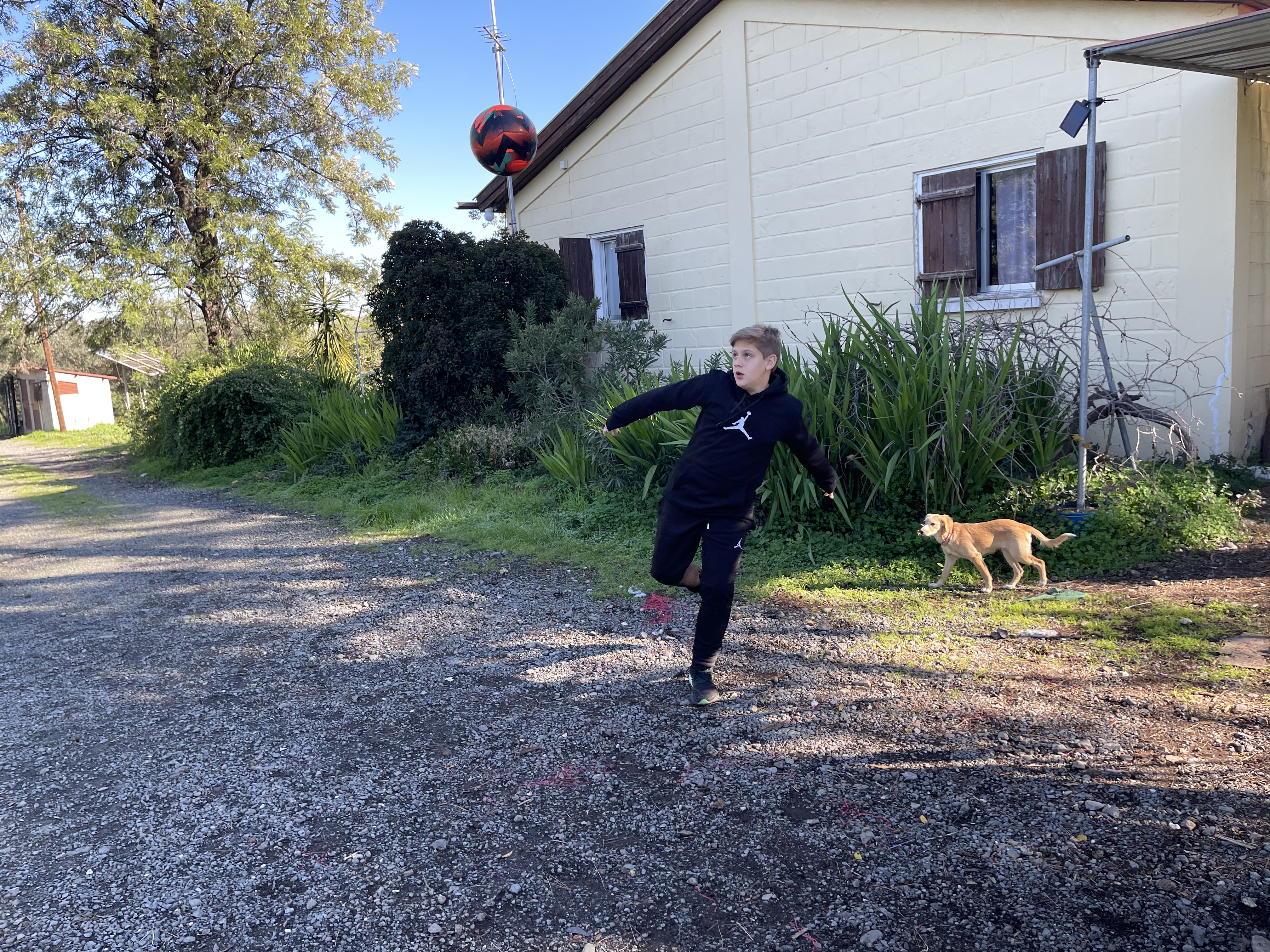Cyprus NGOs encourage fishermen and divers to share records of angel sharks
By Valentina Fossati and Marios Papageorgiou
Angel sharks are a species of shark belonging to the genus Squatina of the Squatinidae family. While there are 23 described species globally, in the Mediterranean sea only three species of angel shark can be found: the Common angel shark – Squatina squatina, the Sawback angel shark – Squatina aculeata and the Smoothback angel shark –Squatina oculata. They are flat-bodied, bottom dwelling species, giving them a resemblance to rays, and growing up to 2.4m in length, and are normally found in sandy habitats in coastal waters. They live in a variety of habitats, including sandy, muddy or rocky areas, and seagrass beds. Unfortunately, angel sharks rank as the second most threatened family of elasmobranchs (sharks, skates and rays) in the world, after Rhino Rays (saw fishes, wedge fishes and giant guitar fishes).
As coastal species, angel sharks have been recorded at various depths from shallow waters down to 500 metres deep. Angel sharks display a unique predatory behaviour uncommon among sharks. With their excellent camouflage abilities these sharks adeptly bury themselves in sand or mud, and lie in wait patiently for the right moment to strike.
They can remain buried in the sand for long periods and can swiftly strike at passing prey in less than a tenth of a second! Their diet includes small sharks, skates, bony fishes, squid, cuttlefish, octopus, shrimps and crabs.
Angel sharks are ovoviviparous, which means that after internal fertilisation, the development and hatching of eggs happens inside the mother’s body. During this process, the embryos are nourished by a yolk sac. The offspring are eventually born as live young capable of swimming independently and being self-sufficient.
Historically, the three angel shark species mentioned above were abundant in the eastern north Atlantic, the west African coast and throughout European waters, but due to heavy fishing pressure they have now disappeared from much of the former range. As a consequence of this decline, all three species are classified as Critically Endangered on the International Union for Conservation of Nature (IUCN) Red List. Their slow population growth rate, late sexual maturity and production of few offspring as well as restricted movement, make them particularly vulnerable to anthropogenic activities and susceptible to local declines.
Furthermore, the three Mediterranean species are listed under the Recommendation ‘GFCM/42/2018/2 on fisheries management measures for the conservation of sharks and rays in the General Fisheries Commission for the Mediterranean (GFCM) area of application’, (amending Recommendation GFCM/36/2012/3). The recommendation mandates high protection of 24 elasmobranch species listed in Annex II of the SPA/BD Protocol of the Barcelona Convention from fishing activities, which if caught must be released unharmed and alive. Additionally, it prohibits (i) finning, (ii) beheading and skinning on board and before landing, (iii) purchasing, offering for sale or selling shark fins which have been removed, retained on board, transshipped or landed, and (iv) fishing activities carried out with trawl nets within three nautical miles off the coast. Such activities are also prohibited in Cyprus which is a contracting party of the GFCM and an EU member state.
Cyprus has been identified as a priority region for angel sharks since all three Mediterranean species have been recorded, but not without facing serious threats. These include (i) a lack of knowledge of their biology and habitat preferences, (ii) low genetic diversity, (iii) being caught as bycatch during fishing operations, (iv) lack of species-specific landings and identification issues in small- and large-scale fisheries, (v) illegal, unreported and unregulated fishing and trade, (vi) non-compliance with existing regulations, and (vii) weak implementation of regulations.
To identify the magnitude of these threats and the current situation of angel sharks in our island, our team comprised by the Enalia Physis Environmental Research Centre, the Society for the Protection of Turtles (SPOT) and iSea documents angel sharks that are incidentally caught in fishing operations and collects information on their biology, distribution, mortality rates and bycatch hotspots in Cyprus. Our efforts are performed under the framework of the project Mediterranean Angel Sharks: Regional Action Plan Phase 2: Implementation, funded by the Shark Conservation Fund and coordinated by The Shark Trust.
We invite everyone to send us your records of observed or incidentally caught angel sharks during fishing activities to gather further data about the angel sharks around Cyprus, thus contributing to our conservation efforts. If you observe these majestic animals, do not touch, feed or remove the sand covering it, and always remember not to swim after the angel shark but rather keep a minimum distance of 1.5m between yourself and the angel shark. An identification guide of three angel shark species is available on our website here.
Over one third of all shark, ray and chimaera species are now at risk of extinction because of overfishing. As apex predators they play a vital role in maintaining well-balanced ecosystems, thus keeping our oceans healthy. Therefore, their protection and conservation are extremely important to planetary health and it is our duty to keep them safe.
Valentina Fossati and Marios Papageorgiou are scientists at the Enalia Physis Environmental Research Centre







Click here to change your cookie preferences